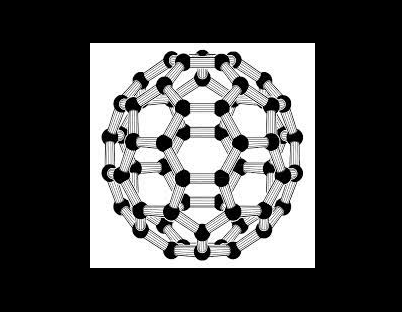Chinese Version
10-28-2022, Friday
This afternoon I flew from San Francisco to Boston, the airplane was very empty. The passenger who sat between the empty seat next to me immediately focused on his computer right after sitting down. Hearing him punching keys on his computer, I guessed he was working hard, on this Friday afternoon’s flight.
When I heard him swearing, I couldn’t help but turn towards him and see that he was editing and flipping a structure diagram similar to the carbon-60 on his computer screen. I learnt the carbon-60 structure diagram more than 30 years ago from Prof. Qiu’s “Carbon Structure and Superconductivity Principle “ elective course. The carbon-60 diagram reminded me of the pleasure of learning as a graduate student, living a very simple and basic life. I couldn’t help but point to the carbon-60 diagram on his computer screen and ask very politely: “Excuse me, what are you studying? ”
“A design of a city art museum.”
It turned out that he was not studying the structure related to carbon-60, I asked again:”What do you do?”
“I am a design engineer.”
I suddenly wanted to know the difference between this kind of design project and software projects so I asked: “I used to be a software engineer, and I worked on many projects that involved multiple teams across the global, because of this, I had to work long hours. Is your design project involved cooperations across global? Do you often have to work overtime?”
“The design itself is not a global project, but the funder of this project had chosen abroad manufacturer after design. So it could be considered a global project. I need to complete the design today as the product is scheduled to be installed in March next year.”
I commented: “There is still a lot of time before March next year!”
“Our project takes the completion of installation as the finish line. Because the production and transportation of products are unpredictable before the installation, the design itself has an earlier deadline and cannot be extended.”
“How many people does your design project have?”
“About ten, including design engineers, material engineers, a project manager, etc.”
It sounds to me that projects in any field need project managers, although the project managers are often the first to be let go during big layoffs. Thinking of his design for the city art museum, I asked, “Is this a government funded project?”
“No, it is privately funded. It will be given to the city as a donation project.”
I didn’t chat with him any more, but from time to time I looked at the three-dimensional mesh on his computer screen, which was rotated and magnified. I saw that each link point of the mesh had huge rivets so I guessed it was a steel mesh. In the general climate of economic downturn, I was surprised that there were still such non-profit private donation projects. I guess the rich are more resistant to economic downturns.
The product on the designer’s computer screen is very similar to the carbon-60 structure diagram:

C60 and Superconductivity
“Superconductivity in a single-C60 transistor | Nature Physics 2009 · Cited by 130 — Here we demonstrate the realization of superconducting single-molecule transistors involving a single C60 fullerene molecule.”

The Nobel Prize in Chemistry 1996 was awarded jointly to Robert F. Curl Jr., Sir Harold W. Kroto and Richard E. Smalley “for their discovery of fullerenes”
Superconductivity. C60–the hole story中提到:“in 1985, chemists discovered a new form of carbon5— known today as buckyballs or fullerenes. crystalline C60 is normally an insulator, but can be made metallic by chemical doping. In normal C60 there are no charge carriers because the energy bands in its electronic structure are either completely filled or completely empty. To create a metal, the conduction band has to be partly filled with electrons (electron doping) or the valence band has to be partly emptied (hole doping).In 1991 it was found that adding alkali atoms to C60crystals leads to charge transfer from the alkali atoms to C60— that is, electron doping. Such alkali-doped compounds(A3C60) can become ‘metallic’ and, at low temperatures, superconducting.”

